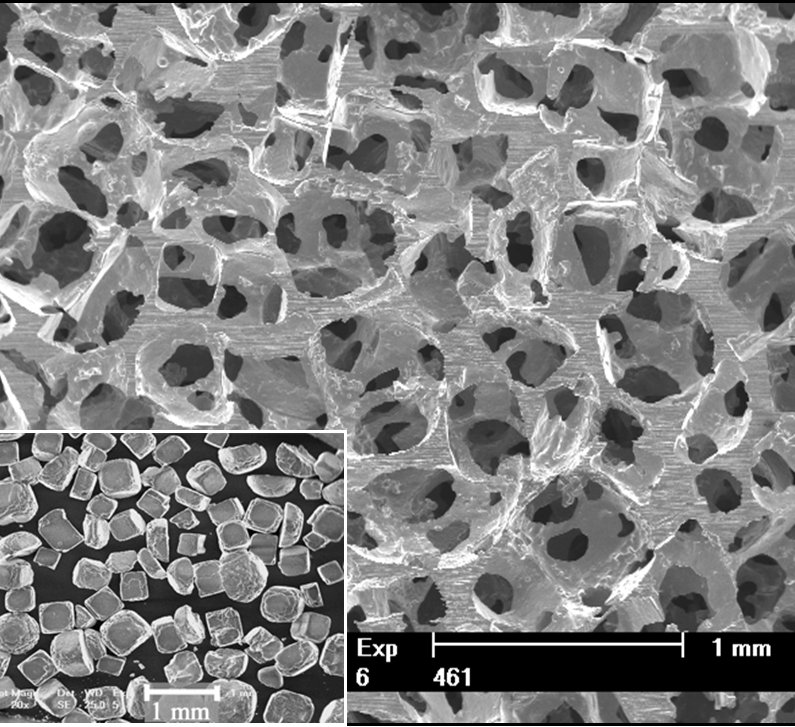Processing and Mechanical Behavior of Replication-Processed Microcellular Aluminium
A. Rossoll, R. Goodall, A. Mortensen with earlier contributions by J.F. Despois, Y. Conde, E. Combaz, F. Diologent, and, at the I.N.P.G. in Grenoble A. Marmottant, S. Soubielle, and L. Salvo
This is an extensive investigation of the processing, structure and mechanical behaviour of open-celled aluminium-based foams sponsored by the Swiss National Science Foundation. We have explored and extended the replication process, by which salt particle preforms are infiltrated with aluminium and leached, towards the production of highly porous microcellular aluminium with cell sizes down to 5 µm. With this process, the size, shape and volume fraction of open pores within the aluminium metal can be varied in several ways, including modification of the salt particle shape, of salt particle preform densification processing, infiltration parameters and metal alloying. We have used the unique flexibility afforded by this process to characterize several structure-property relations for this class of materials, including notably their elastic modulus, triaxial flow stress and yield surface, plastic deformation and fracture in uniaxial deformation (tensile and compressive), their creep deformation, fracture and fatigue. We have placed focus on (i) the role played by the foam mesostructure, which can be varied by varying the processing route and process parameters used in producing the salt preform, and (ii) the role played by the inner microstructure of the metal making the foam, which can be varied by alloying, solidification control, and heat treatment, on the principal physical and mechanical properties of these highly porous metals, and (iii) plasticity size effects, which are manifest in these materials at fine pore sizes. This project is in its final phases; in current work we are exploring the physics of plastic flow within these materials, with focus on size effects, on the density scaling of stiffness and flow stress, and on the influence of alloying on the flow stress of these highly porous materials (in collaboration with Prof. Roberto Doglione of the Polytechnical Institute in Turin).
